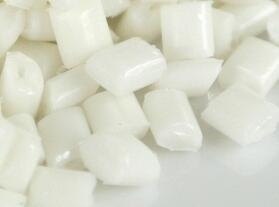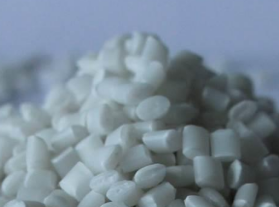Plastic raw materials polypropylene, better known as PP, is a crystalline thermoplastic made up of a blend of different polypropylene monomers. It is known for its toughness and rigidness. Being resistant to many external factors makes Polypropylene one of the most used thermoplastics in the plastic manufacturing industry. Plastic raw materials polypropylene is broadly utilized in producing many different kinds of products in various industries throughout the world.
People wouldn’t even realize that most of the products they’re using in their day-to-day lives are produced by Polypropylene plastic.
According to a study conducted by Fortune Business Insights, the global polypropylene industry’s size stood at USD 78.22 Billion in 2019 and is projected for profitable growth with reaching USD 105.49 Billion by the year 2027.
| |
There are two major types of polypropylene available in the global market called Homopolymers and Copolymers.
| |
 1. Polypropylene Homopolymer: 1. Polypropylene Homopolymer:
It is the most extensively utilized general-purpose grade polypropylene type. It contains a propylene monomer in a semi-crystalline form. The major applications are seen in textiles, packaging, pipes, healthcare, and electrical industries.
2. Polypropylene Copolymer:
This Polypropylene family is divided into multiple random copolymers and block polymers. The family is created after polymerizing propane and ethane.
Polypropylene Random Copolymer:
This variation of PP material is produced by polymerizing ethane and propane. The ethane units take about 6% of the total mass, accommodated randomly within the polypropylene chains.
These polymers have fantastic optical clearance and decant flexibility, making them suitable for producing visual products and products requiring significant physical presence.
Polypropylene Block Copolymer:
This polypropylene is more rigid and less fragile compared to the random copolymer. That’s because of the higher ethane content of 5% to 15%. The co-monomer is arranged in regular blocks.Because of high rigidness, these polymers are highly suitable for heavyweight industries like transportation and logistics. | |
| |
Impact Copolymer:
Impact copolymer is a combination of Propylene Homopolymer and Propylene Random Copolymer. The ethylene content is super high, at 45% to 65%.
Mainly utilized in manufacturing components requiring tremendous impact resistance. Thus, it is highly suitable and heavily used in automotive and electrical applications.
| |
 Expanded Polypropylene: Expanded Polypropylene:
This PP material has a foam-like structure and appearance with very low density. The foam-like design makes it attractive to produce 3D polymer foam products.
It has an impressive higher strength-to-weight ratio, thermal conductivity, great impact resistance, water, and chemical resistance.
Expanded polypropylene is mainly used in construction, electrical, automobiles, and consumer goods.
Polypropylene Terpolymer:
Polypropylene terpolymer is comprised of 3 chemicals: propylene segments, monomers ethylene, and co-polymer.
It has remarkable transparent properties and reduced crystalline uniformity, making it the right choice for sealing film and related applications.
Polypropylene, High Melt Strength:
Plastic raw materials polypropylene is what it sounds like. This polypropylene material blends melt strength and expandability fantastically. It has good chemical resistance and a slew of excellent mechanical properties, making it quite fitting to produce soft, low-density foams, food packaging, automobile, and construction verticals. | |









 1. Polypropylene Homopolymer:
1. Polypropylene Homopolymer:  Expanded Polypropylene:
Expanded Polypropylene:

